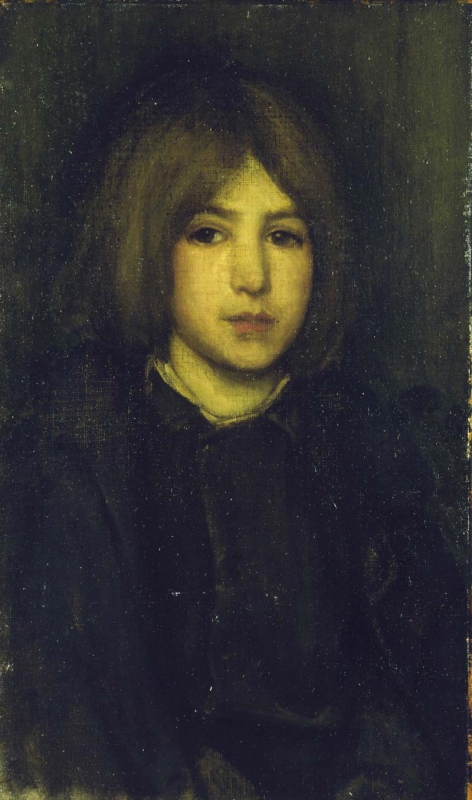Home > Catalogue > People > George Washington Vanderbilt (related works) > Catalogue entry
Titles
Only one title, with variations in language and punctuation, has been suggested:
- 'Brun et Or – de Race' (1905, Royal Society of Portrait Painters). 1
- 'Brun et or. De Race. – Brown and Gold. De race' (1905, Palais de l'Ecole des Beaux-Arts). 2
- 'Brown and Gold – "de Race" ' (1936, University of Glasgow). 3
- 'Brun et or: De race' (1980, YMSM). 4
'Brun et or: De race' is the generally accepted title.
Whistler not only added monetary value to the title, with the word 'gold', but described the sitter as 'de race', which suggested that he was born of pure blood, i.e. a thorough-bred, of aristocratic appearance. For example, in describing the reaction of Robert de Montesquiou-Fezensac (1855-1921) and Marie Louise Hortense Madeleine de Montebello (1853-1930) to Arrangement in Black and Gold: Comte Robert de Montesquiou-Fezensac [YMSM 398], Whistler told his wife,
'[T]hey gloried in the picture as an apotheosis of themselves, their birth their "race"! - "It is the sense of pride" said the Count, "unstained with vanity"!!! - "C'est noble" said the grande dame with a sort of religious intonation - and there they were really worshipping before a sort of monument of their blue blood!' 5
The boy was not the only sitter virtually ennobled by Whistler, who often called a sitter 'princess', while his landlady's daughter became 'Rose and Gold: The Little Lady Sophie of Soho [YMSM 504].
Description
A half-length portrait in vertical format. It shows a young boy with fine features facing the viewer. He has olive skin, dark brown hair with a central parting. He wears very dark clothes, and is seen against a dark khaki green background.
Sitter
Charles Lang Freer (1856-1919) of Detroit recorded seeing a portrait of a 'little boy with fine eyes' in Whistler's studio in 1903. 6 Freer also noted that Whistler had painted another portrait of this boy, The Boy in a Cloak [YMSM 512]. The sitter, a young Italian boy, was the brother of The Little Faustina [YMSM 510] and of 'Le Raconteur' in Vert et or: Le Raconteur [YMSM 513].
Notes:
1: 15th Exhibition, Royal Society of Portrait Painters, London, 1905 (cat. no. 30).
2: Œuvres de James McNeill Whistler, Palais de l'Ecole des Beaux-Arts, Paris, 1905 (cat. no. 36)
3: James McNeill Whistler, University of Glasgow, Glasgow, 1936 (cat. no. 36).
4: YMSM 1980 [more] (cat. no. 511).
5: J. Whistler to B. Whistler, [31 January 1892], GUW #06003. Whistler also used the phrase 'of race' and 'born' in reference to Montesquiou's approval of A. de la Gandara, in another letter to B. Whistler, [30 January 1892], GUW #06608.
6: [1903], Diaries, Bk 13, Freer Gallery Archives.
Last updated: 22nd October 2020 by Margaret







